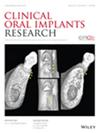Accuracy, Safety, and Efficiency in Robotic-Assisted vs. Freehand Dental Implant Surgery: A 6-Month Follow-Up Randomized Controlled Trial
Abstract
Objectives
To assess the implant accuracy, safety, and efficiency between robotic-assisted and freehand dental implant placement with a half-year follow-up.
Methods
Patients requiring single-tooth implant restorations were recruited and randomized into two groups: robotic-assisted surgery and freehand implant surgery. The accuracy of implant positioning was compared by assessing immediate postoperative CBCT scans against preoperative planning software. Intraoperative and postoperative complications were recorded, and data were analyzed using an intention-to-treat approach. The time required for implant placement in each group was documented. A 6-month follow-up measured the implant survival rates.
Results
The study included 24 patients (median age 36, 18 female). In the robotic-assisted surgery group, the average platform global deviation, apex global deviation, and angular deviation were 0.70 ± 0.11 mm, 0.70 ± 0.12 mm, and 1.09° ± 0.67°, respectively. In the freehand implant surgery group, these measures were 1.24 ± 0.59 mm, 2.13 ± 1.26 mm, and 7.43° ± 6.12°, respectively, with statistically significant differences. Regarding the duration of surgery, the robotic-assisted surgery group required 18.8 ± 4.89 min. Intraoperative and postoperative complications were similar across both groups, and the implant survival rate was 100% in both groups at the 6-month follow-up.
Conclusions
This study found that robot-assisted implant placement offers higher accuracy in implant positioning compared to freehand placement, while requiring longer operation times. Future developments should focus on simplifying the registration and design of robot systems to enhance efficiency and facilitate their broader clinical adoption.

 求助内容:
求助内容: 应助结果提醒方式:
应助结果提醒方式:


